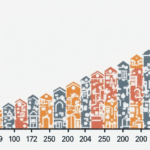The Promise of Payment Interoperability
Mexico has the opportunity to move money as easily as sending an email, thanks to payment interoperability. This model connects payment systems, cards, banks, and even those from different countries.
According to the study “The Internet of Opportunity” by the Interledger Foundation and Finnosummit, this integration could save up to $100 million annually in remittance fees.
Technical Readiness and Adoption Challenges
Mexico is technically ready to adopt this model, according to a survey of banks and fintech companies. 63% of the institutions already have the necessary infrastructure, while 62% believe their technical teams could implement it within six months.
However, adoption is hindered by the lack of clear use cases demonstrating tangible benefits. This leaves the sector divided, with 44% of respondents ready to test interoperability immediately and 56% cautiously responding “maybe.”
Economic Significance and Current Costs
The economic potential is significant, with over $64.7 billion in remittances arriving in Mexico last year. The study details that families lose between 4% and 5% in fees and exchange rates.
If Mexico could reduce this cost to the UN standard of 3%, it would release an additional $100 million annually directly to households.
Interledger Protocol (ILP)
The Interledger Protocol (ILP) is a facilitator for universal money transmission, similar to how the internet uses protocols like TCP/IP that enable communication across different email services.
With ILP, payments can flow between banks, digital wallets, card networks, or even cryptocurrencies. This system would allow payments to be sent as easily as sending an email or sharing a photo online.
Benefits for Different Parties
- Families receiving remittances: Dollars sent from the U.S. would almost instantly arrive in pesos with minimal fees.
- Merchants: The ability to charge from any app or bank without contracts.
- Developers: Creation of new financial apps without connecting to each system separately.
Challenges and International Examples
Despite the benefits, structural challenges exist. The rural digital divide limits adoption.
The Scenario
Shared Leadership:
Banks, card networks, regulators, fintech, and merchants must coordinate efforts to implement interoperability.
International Examples:
India (UPI) and Brazil (Pix) show that interoperable systems increase financial inclusion and transaction volume.
Mexican Potential:
Mexico has the technology, talent, and demand; the challenge is establishing coordination, clear rules, and joint will.
Economic Benefits:
It could reduce payment costs, as small and medium enterprises (SMEs) in Mexico pay 2% in fees for payments, compared to 0.33% in Brazil, and expand access to financial services in rural areas.






